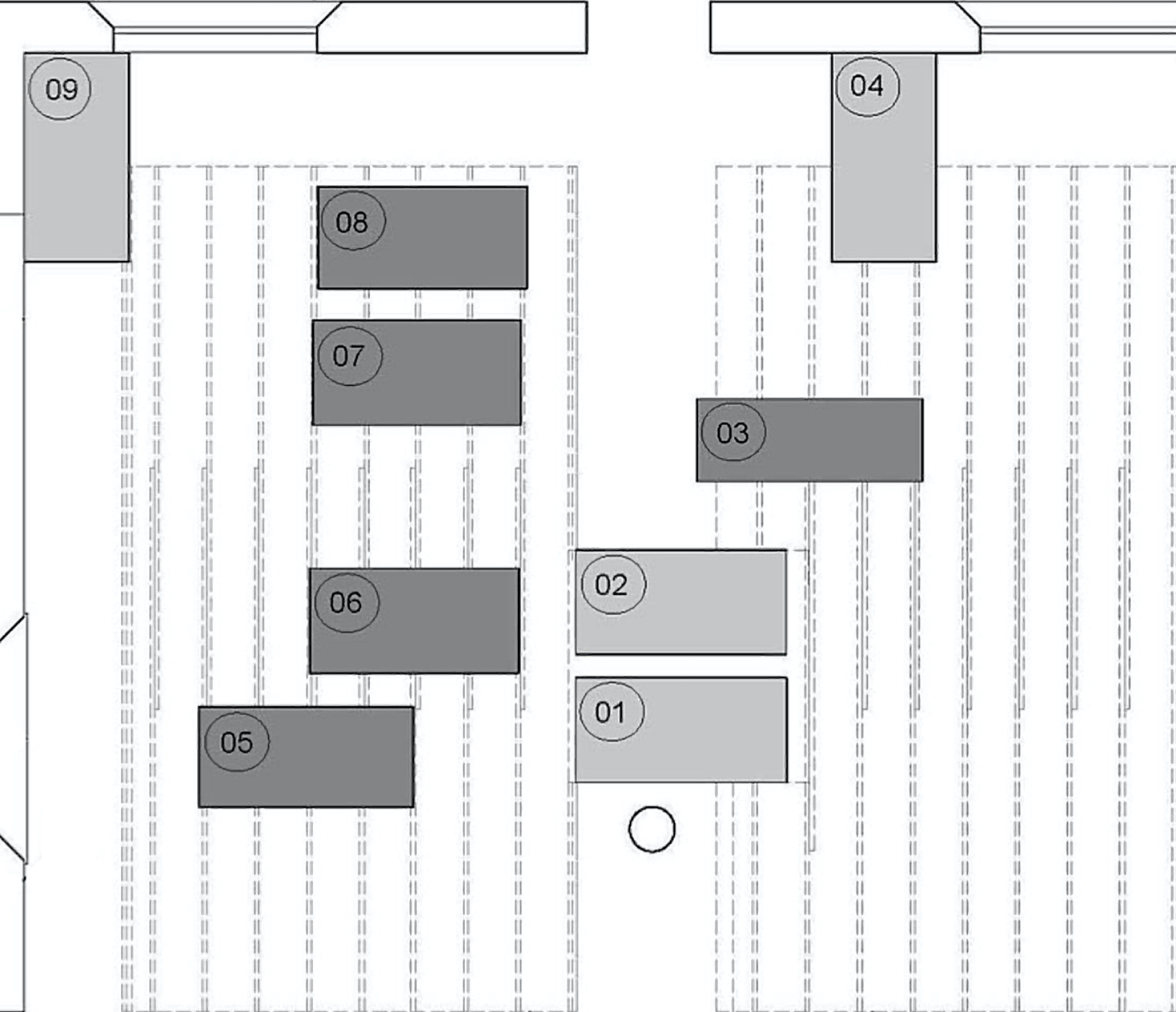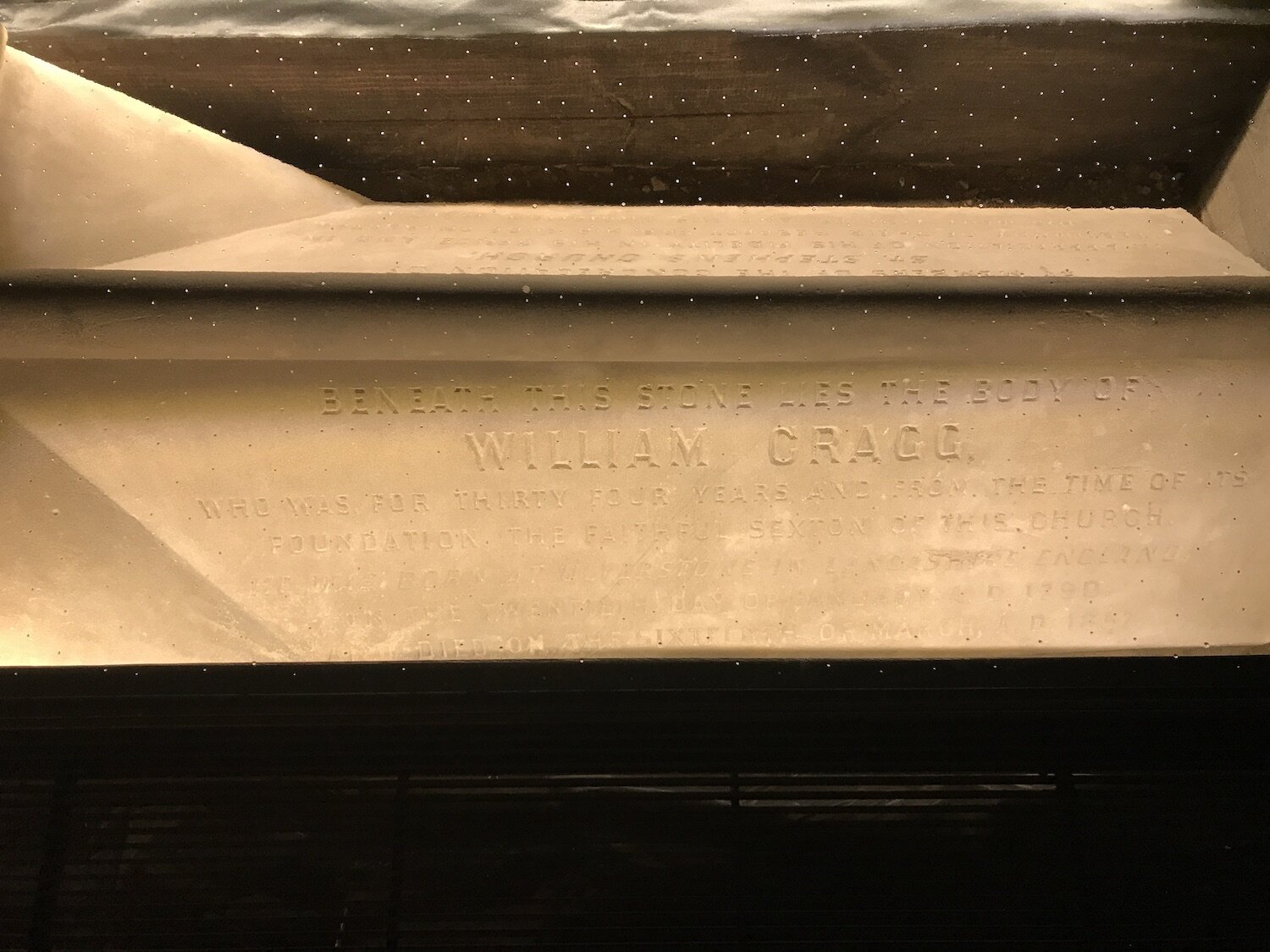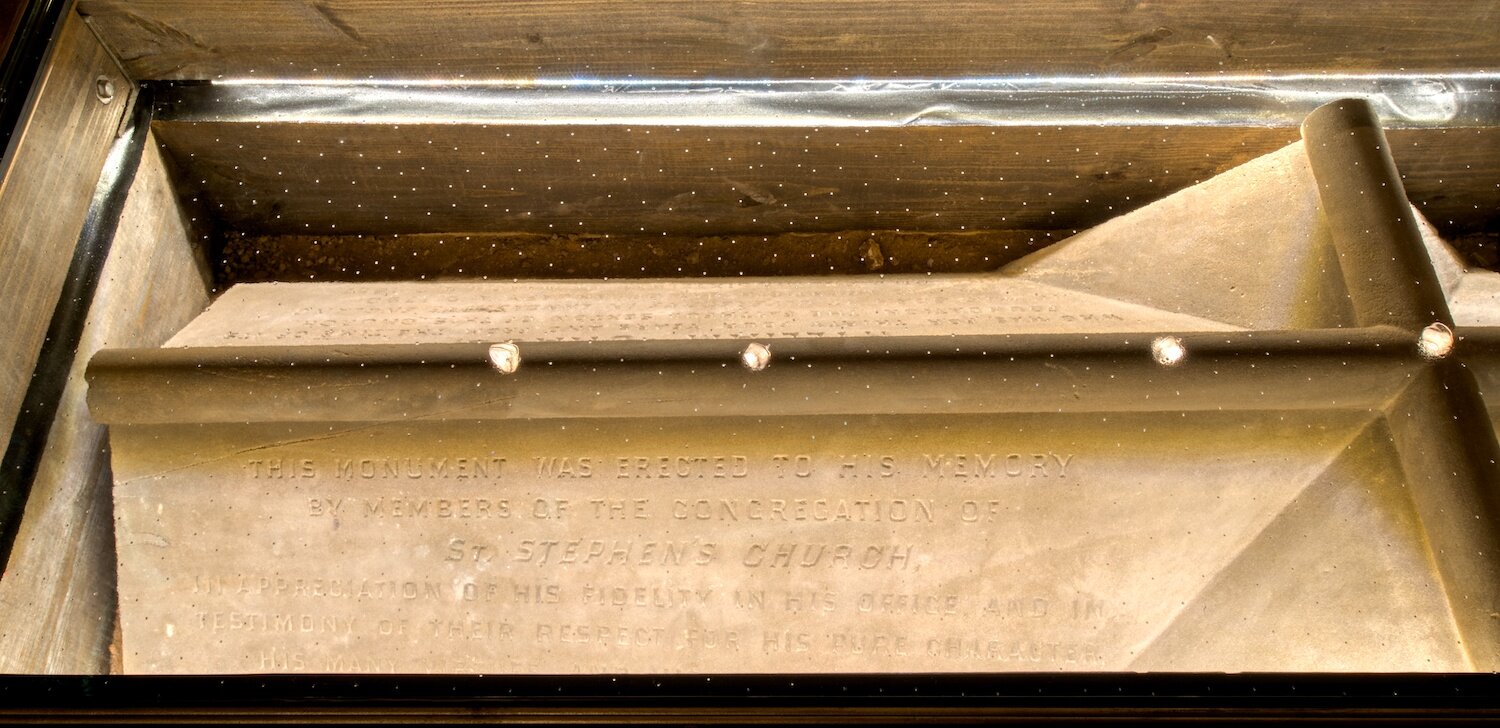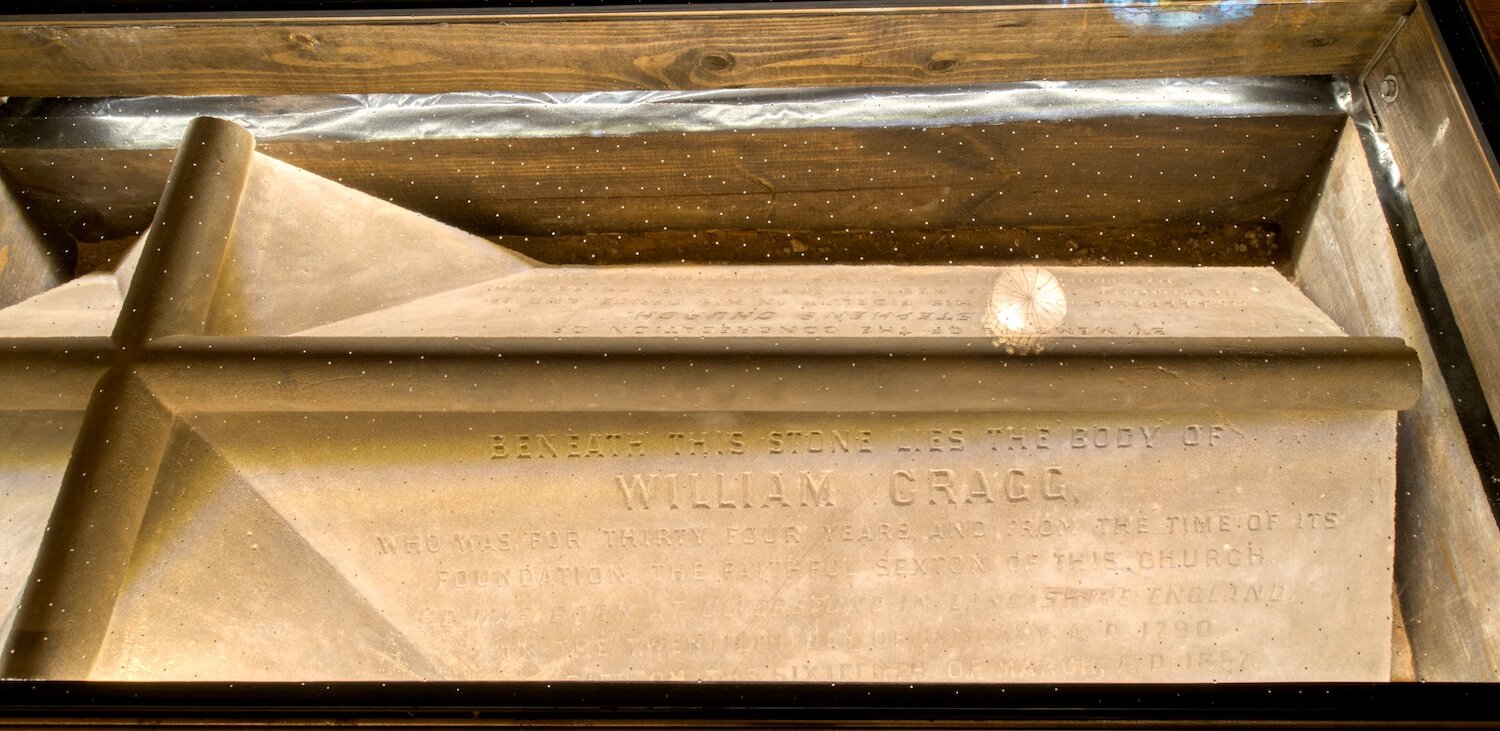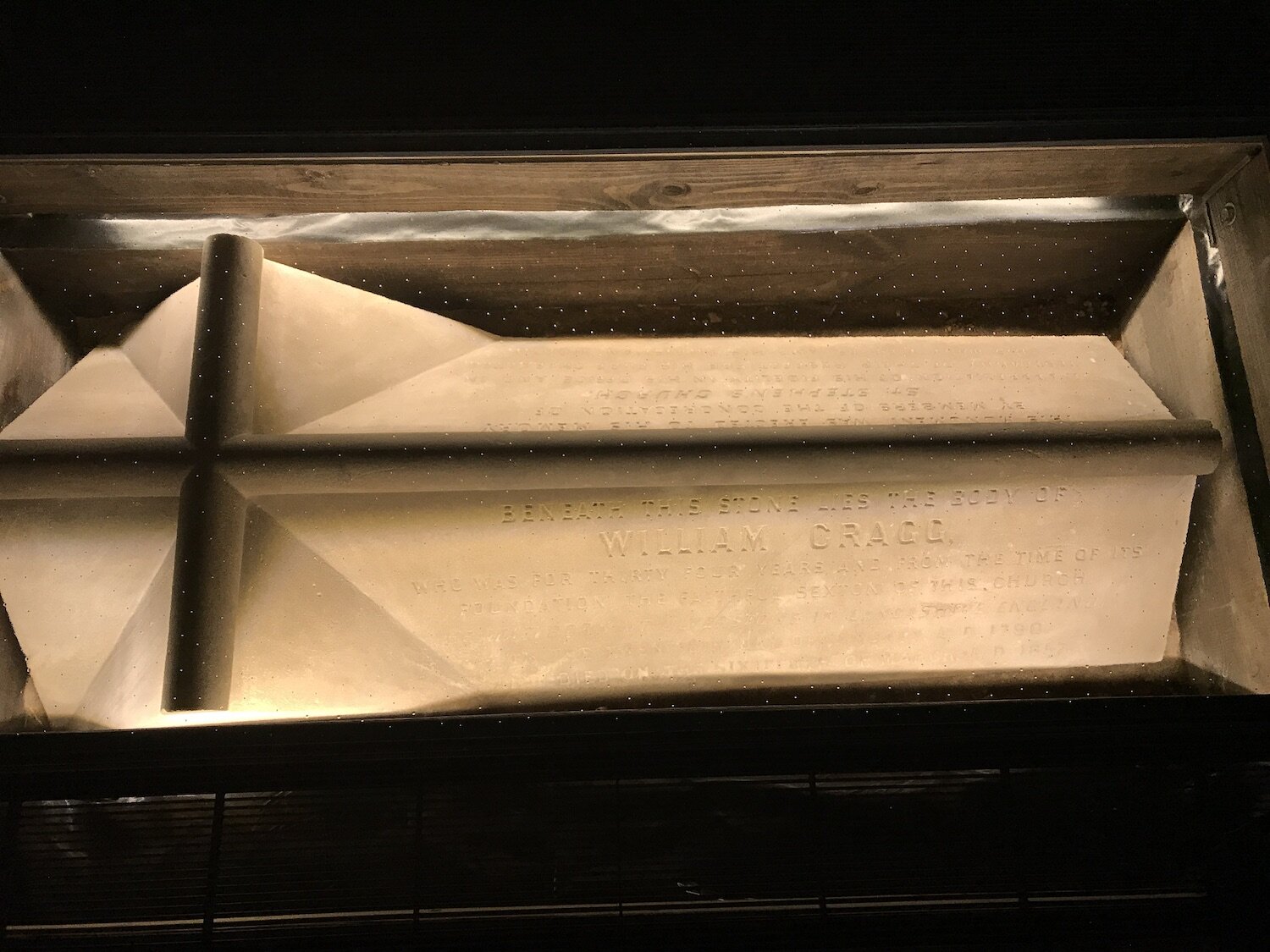Very little is currently known about Lewis Duval, an original member of the congregation. He was a Philadelphia businessman of the first decades of the 19th century from a family in Germantown, a German settlement incorporated in Philadelphia shortly after he died in 1851. Many know Duval for his marriage, in 1821, to Adeline Maria Peacock, the older sister of the celebrated Cornelia Peacock Connelly, now on the Vatican’s formal quest for sainthood.
Together with a tomb in the Parish House vestibule for another relative (Isabella Montgomery Bowen) and markers for box pews held by the Duval and Peacock families, this inscribed vault bears witness to the extended Peacock family’s tenure at St. Stephen’s during the church’s first years. A family with shifting religious affiliations over the decades, they may have been attracted to this new church by relatives in authority there: its founding rector, Rev. James Montgomery, and his brother Austin, who married Adeline and Cornelia’s half sister Isabella. The Duvals were baptized at St. Stephen’s after their children--as adults, with other Duval family members, Cornelia, and sister Mary Cecilia in 1831.
Duval interred his earliest known children (whose names, if any, are not recorded) in St. Stephen’s churchyard soon after it opened, in a parish common vault which he then bought as an exclusive family repository in December 1825. It is not clear whether they are children with Adeline Maria (by that date they had three) or from a prior marriage, since the church waived burial fees for his “wife” that year too, when Adeline Maria was still very much alive.
The Duvals’ last recorded ritual activity at the church was in 1837, the funeral for their infant twin sons. Though speculative, for all its family connections, St. Stephen’s, then a high-church congregation, might be considered a preliminary doctrinal step in this extended family’s move towards Roman Catholicism. The Duvals move to Cincinnati, Ohio, in the late 1830s, where they both converted to Roman Catholicism in the 1840s. Lewis reportedly died, as mentioned, in 1851; Adeline, in August 1855.
Where they are buried is not yet known.

